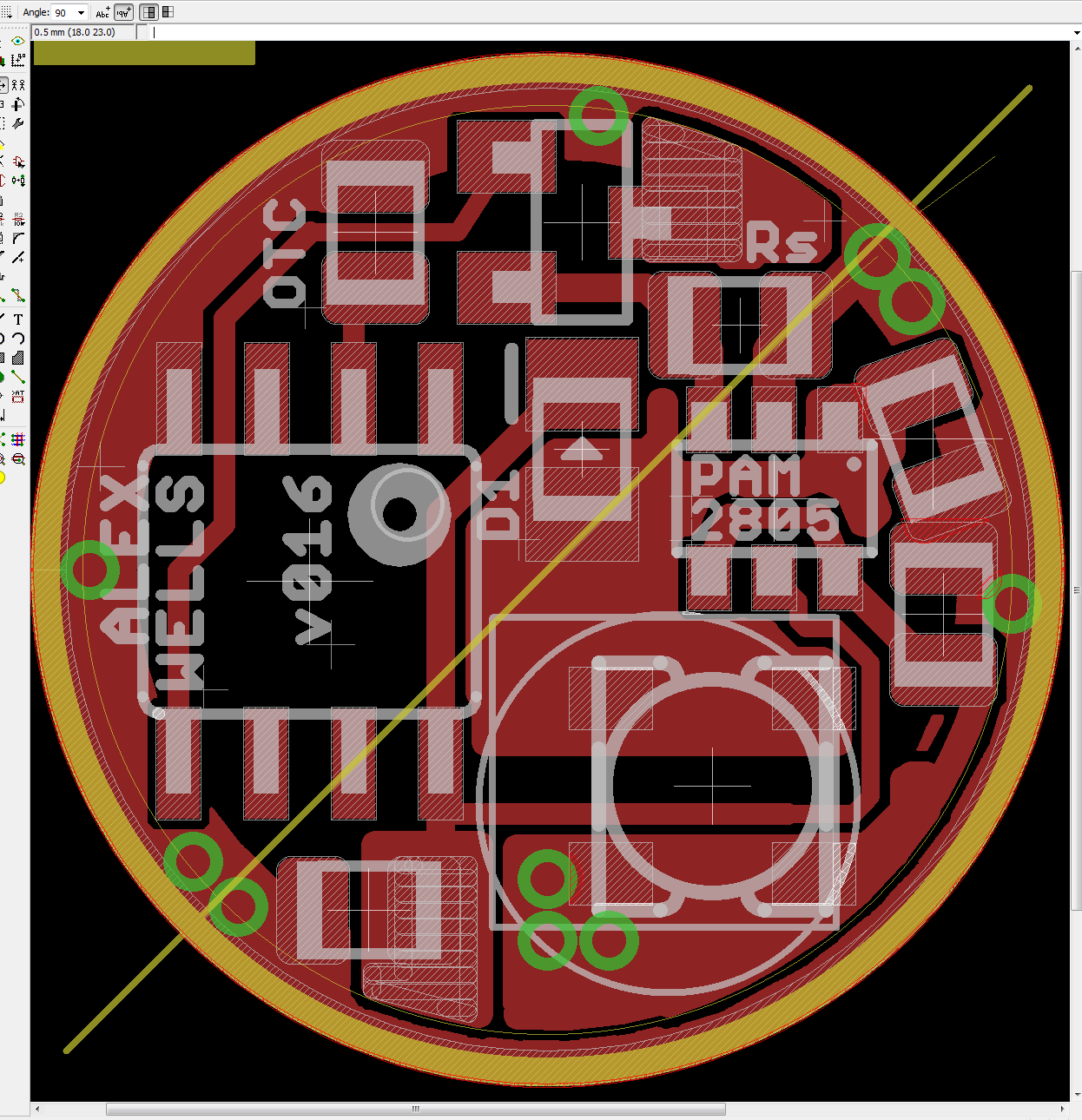I really don’t know if this will work. A lot of sacrifices to components have been made:
- voltage divider deleted
- uhm, actually maybe that was it?
So I layed out an ATtiny13A and what I think is an entire PAM2803 boost circuit in a 15mm PCB w/ 0.75mm electrical and physical keepouts around the edges… The inductor I used is way too small I think. You can see in the image that I measured a 5.5x5.0mm rectangle, this is closer to a realistic inductor I think. Those are the approximate footprint dimensions of the inductor from a Lux-Pro 2D boost driver, although that inductor has rounded corners. With luck a modified clip will fit. (modified to clear the inductor)
Components around the edge, going clockwise from the ATtiny:
ATtiny
Capacitor (Offtime)
Sense resistor
FET for PWM (which may be miswired, sue me)
Capacitor (Output)
Capacitor (Input)
Inductor
Capacitor (ATtiny Vcc decoupling cap) (maybe we can delete it)
In the center:
Schottky using 0805 footprint
PAM2803
Clearly this thing has a lot of tuning up to be done. It may not work at all. Ever. That said, after cleanup I think this design will closely follow the PCB Layout Guidelines from the datasheet for PAM2803.
As I’ve explained elsewhere after reading the datasheet, PAM2803 appears to have Overvoltage Protection which prevents it from boosting beyond around 5.12v. This is how we are able to bootstrap the ATtiny off of it, even while using PWM to interrupt power to the LED. With many boost circuits voltage would spike, but the datasheet clearly shows a graph scope image! for OVP which I think is clean enough for the ATtiny to be OK.





 ), does it also outperform the middle-of-the-road boost drivers that come with cheapie lights?
), does it also outperform the middle-of-the-road boost drivers that come with cheapie lights?